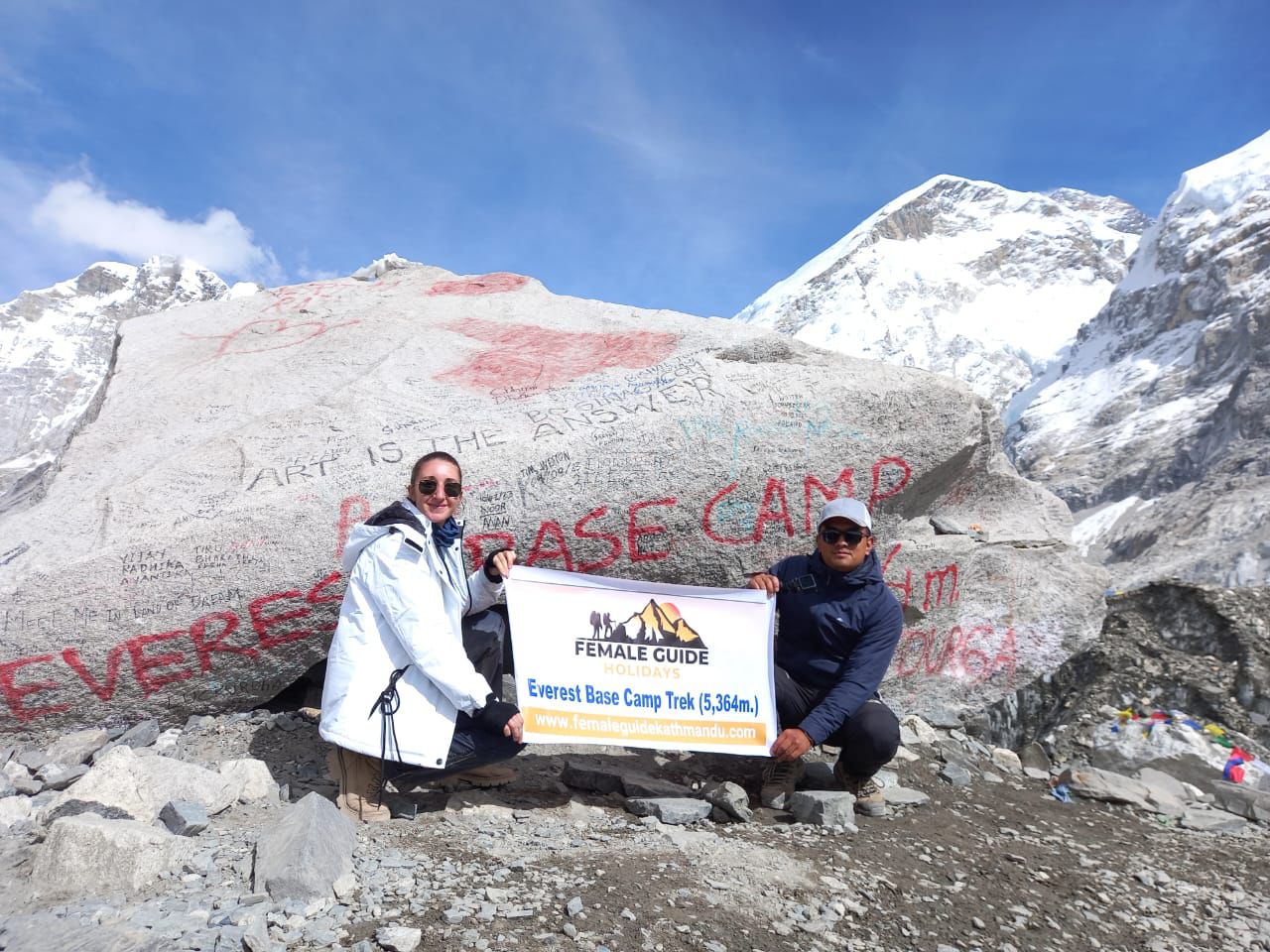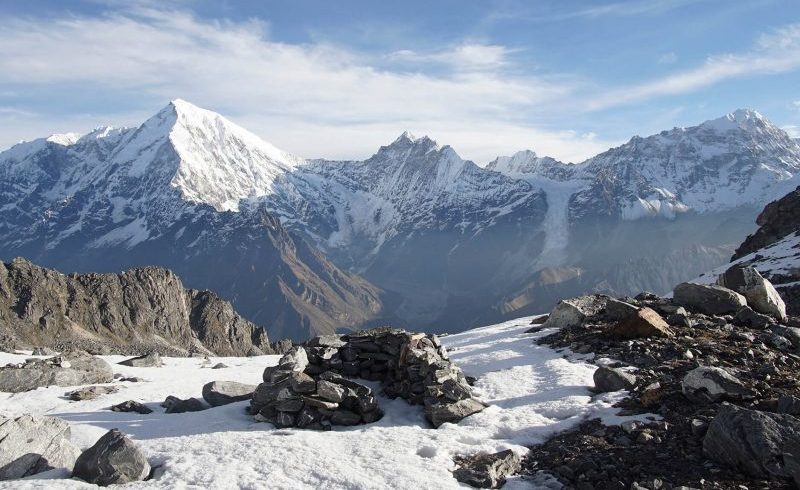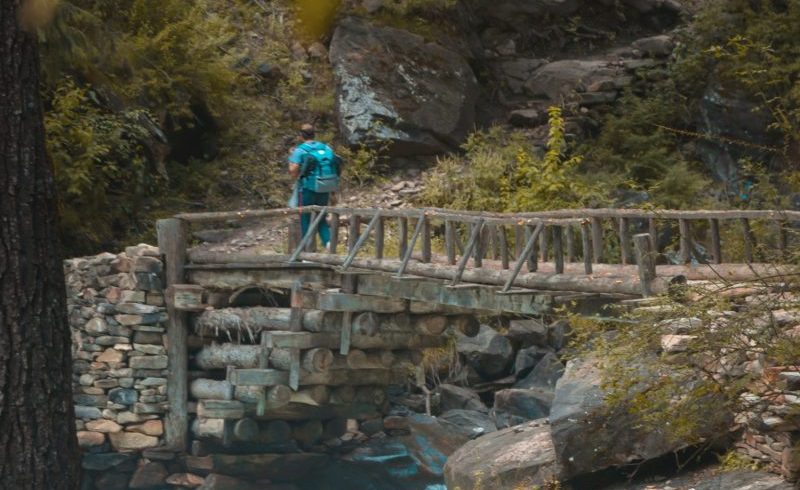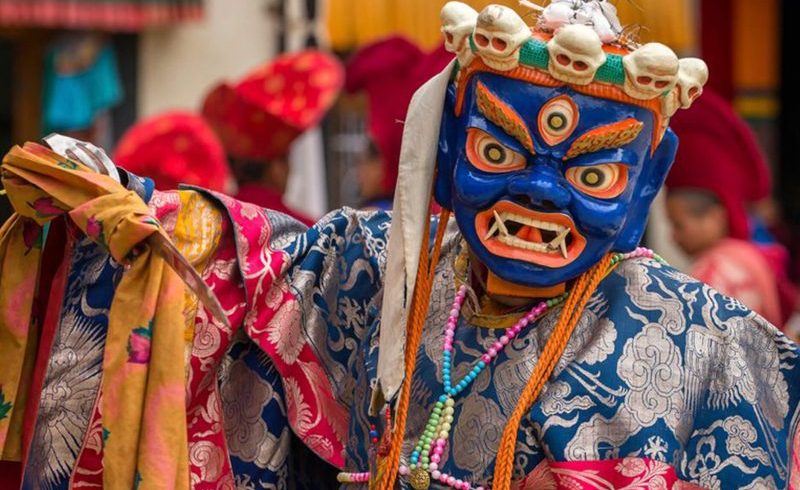This 14-day Everest Base Camp Short Trek Itinerary combines breathtaking panoramas of the world’s highest mountains with unique Sherpa culture. The trip begins with a short flight to Lukla, a charming Sherpa settlement, where you’ll be impressed by the spectacular vistas of the mighty Himalayas from the very beginning of the trek. Upon landing at Lukla, you’ll begin your EBC trek. Phakding, Namche, Tengboche, Dingboche, and Gorakshep are all Sherpa settlements that could be reached by trekking along well-established trails, you’ll not only hike through valleys surrounded by stunning snow-capped mountains on your EBC tour, but you will also gain a profound understanding of Sherpa culture and customs.
Overview
Mount Everest Base Camp (EBC) is the doorway to the Himalayas’ most spectacular, majestic, and stunning scenery. It is one of Nepal’s most well-known treks, leading to the foot of Mt. Everest, the world’s highest mountain.
Mount Everest Base Camp’s major highlights include trekking through the alpine region on remote mountain ranges, experiencing true wilderness, exploring Everest Base Camp, hiking Kala Patthar- one of the best viewpoints in the Khumbu valley, and enjoying the best sunrise view over majestic peaks.
There are a lot to explore and absorb throughout the EBC route. A hike to Kala Patthar is another highlight of this Everest Base Camp Tour (5,644 m). Kala Patthar is one of the best places to catch a close-up glimpse of Mt. Everest, the world’s highest mountain. This overlook is also the trek’s highest point, offering spectacular scenery of the world’s tallest peaks over 8,000 meters. Mt. Everest, Mt. Nuptse, Mt. Lhotse, Mt. Pumori, and Mt. Ama Dablam are all visible from this vantage point. Similarly, the Everest Base Camp trek is moderate to challenging in difficulty, with some preparation, you can accomplish this expedition.
The EBC trek will undoubtedly put your physical and emotional endurance to the test. This 14-day EBC itinerary offers a better opportunity to make your dreams a reality while also challenging yourself, you’ll be able to uncover both natural beauty and your own potential on this adventure.
The Everest Base Camp Short Trek can be conducted at any season of the year, however, fall and spring are the optimum seasons for the Everest Base Camp Short Trek. During the climbing season, which runs from April to May, you’ll get the opportunity to meet real mountain superheroes who are attempting to summit Mt. Everest.
Best Time to Travel & Weather Condition:
The ideal seasons for Everest Base Camp Helicopter Trek are spring (March to May) and fall (mid-September to November). During these seasons, the weather is dry and clear, making it perfect for trekking and basking in pristine mountain landscapes. The days are pleasant, while the evenings are cool. However, because these are peak seasons, the trails get crowded and busy.
The foothills are enchanting with wildflowers, especially rhododendron blossoms, in the spring. The Base Camp is transformed into a tented city during the climbing season, with climbers and Sherpa guides. Trekking to Everest Base Camp is extremely popular in the autumn, you may experience extremely clear sights during this season due to the ending of the heavy monsoon season, which clears the atmosphere.
If you plan your journey around October, you’ll be able to attend Mani Rimdu, the Everest region’s most significant festival, people from Tengboche, Chiwong, and Thame monasteries all participate in this celebration.
Entry Permits & Requirements:
The Everest Base Camp Helicopter Trek requires two permits:
1) Sagarmatha National Park Entry Permit and
2) Khumbu Rural Municipality Entrance Permit.
Unlike many Nepal Himalaya climbs, you won’t require a TIMS (Tourist Information Management System) card for this one.
The Nepal Tourism Board’s office in Kathmandu or the park’s entrance gate in Monjo can provide you with Sagarmatha National Park Entry Permit for NRS 3000.
The fee for citizens of SAARC nations is NRS 1500.
You must complete the permit application and present your passport or a copy of your passport. You must be in Lukla to obtain the Khumbu Pasang Lhamu Rural Municipality Entrance Permit. The permission costs NRS 2000 and may be acquired at the rural municipality counter on the outskirts of the settlement. You won’t have to worry about waiting for permits since the company or our guides will take care of everything.
Travel Insurance:
All clients participating in any activity must have travel insurance. Personal injury, death, hospital expenditures, repatriation fees, helicopter rescue, and any other disease covered by the insurance plan will be given, we highly advise you to acquire a comprehensive insurance plan from a trustworthy insurance company.
Passport and Visa:
Every client must have a valid passport from the return date with a 6 months prior validity by the Nepalese consulate in your country or immigration office at Tribhuvan International Airport in Kathmandu.
Equipment lists
- Find the guidelines regarding essential trekking gears.
- Daypack above 40 liters. (Must be waterproof)
- Down jacket (rental available)
- Warm sleeping bag (rental available)
- Sun head, gulf cap, sunglasses, headlamp, and torchlight.
- Ear-muffs, sun Lotions/sun cream.
- One pair of liner gloves is thin wool and synthetic.
- Cotton t-shirts, Synthetic t-shirts.
- Two Long sleeve polyester or synthetic lightweight for sunny days.
- One Soft-shell jacket has water & wind resistance.
- One swimming dress.
- Inner cloths as your requirement.
- Liner socks, woolen socks.
- Proper trekking shoes.
- Imodium or Pepto Bismo capsules for upset stomach or diarrhea.
- Diamox for altitude sickness. The guide will help you to take it.
- One small personal-sized first-aid kit with blister treatments such as moleskin, bands, anti-infection ointments, and muscle relief ointments.
Meals and Drinking Water:
Popular trekking areas like Annapurna, Everest, Langtang, and Manaslu offer a menu system featuring different ethnic cuisines and western meals. However, some places serve typical Nepali meals, which differ from international cuisine. Local residents prepare these meals. Every tourist lodge and tea house employs a well-trained cook who focuses on preparing clean, hygienic, fresh, and delicious food. Each lodge also provides safe drinking water or mineral water. If you buy a water purification tablet from Kathmandu you can take water from the tap and purify it by yourself, this will be cheaper and control plastic pollution as well.




